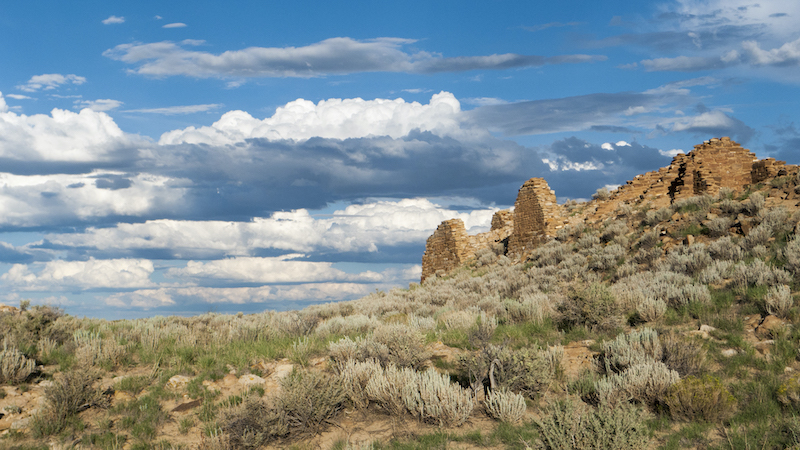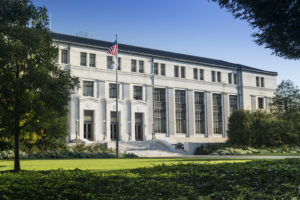
In the battle for self-determination, unrecognized Indian tribes can petition for federal acknowledgment.
Federal recognition of an Indian tribe’s sovereignty establishes a government-to-government relationship between the tribe and the United States.
The United States currently recognizes 574 sovereign tribes, each of which is eligible to receive services from the Bureau of Indian Affairs. Without this federally recognized status, tribes lack homeland protections and face impediments to exercising sovereign powers to protect their people. Unacknowledged tribes are also denied access to health care, education, protection of tribal children, and protection of tribal ancestors’ resting places.
For those tribes whose history has left them outside the federal system, the path to “federal acknowledgment”—whether through the U.S. Congress, the courts, or the Bureau of Indian Affairs’ administrative process—reveals the uneven power dynamic between the United States and Indian tribes.
In part, the federal acknowledgment process has developed because the U.S. Constitution and hundreds of years of case law confirm that Indian tribes are sovereign entities, separate from the states, and subject only to the dominant sovereignty of the United States. In exchange for wholesale dispossession of tribal people from their territories, the United States carries certain trust responsibilities to the original inhabitants of the continent.
The administrative process for federal acknowledgment provides an opportunity for tribal petitioning entities to educate and persuade the federal government about historical facts that warrant formal recognition of their existence and inherent sovereignty.
Evidence of some tribes’ historical existence appears in the 368 mostly broken treaties between those tribes and the United States, most of which are land cessions. But even those hundreds of treaties fail to enumerate the tribes that existed before the Republic—tribes who made treaties with colonial powers, and those whose suppression was not formalized in an agreement with Congress.
Most tribes that have sought federal acknowledgment are among those contacted first by colonizing powers—whose lands were quickly appropriated and whose existence the United States subsequently ignored. Some of those tribes briefly surfaced in federal consciousness during the mid-19th century, when the U.S. government’s Indian removal policy forcibly relocated entire populations from their homelands and into Indian territory, permitting the federal establishment to seize more land and resources.
For nearly 200 years, federal Indian policy swung between war and assimilation, between land dispossession and reorganization to strengthen tribal infrastructure, and between tribal termination and self-determination—leaving the historical record of tribal continuity in tatters. By 1978, aware that there were likely gaps in its knowledge of tribal entities, the U.S. Department of the Interior issued rules establishing an administrative path to federal acknowledgment. These rules are a mechanism for the United States to correct long-standing error, yet without any need to apologize.
The Office of Federal Acknowledgment (OFA) publishes a list of tribes whose petitions for acknowledgment were resolved through this administrative process. Its list of decided cases shows a complete review of 52 petitions for federal acknowledgment, of which 18 tribal entities were recognized and 34 were denied recognition.
The federal acknowledgment process demands that a petitioning tribal entity provide comprehensive documentation and a supporting narrative adequate to satisfy seven mandatory criteria, collectively intended to demonstrate the entity’s continuous existence from historic times through the present. These criteria include: identification as an Indian entity by federal officials; continuous existence as a community; continuous political authority; a governing document; current members’ descent from a historic tribe; unique members who are not principally members of a recognized tribe; and that the tribal entity has not previously been terminated by Congress.
In the 1980s, the OFA approved applications consisting of short narratives backed up by a few hundred pages of documentation. In recent years, however, a fully documented petition typically approaches 200,000 pages of materials retrieved from multiple archival sources, accompanied by a detailed narrative explaining the satisfaction of each criterion. These applications are submitted for review by the OFA’s anthropologist, historian, and genealogist.
To have any chance of success, a petitioning entity must conduct a multidisciplinary research project and package it as conclusively satisfying the OFA’s criteria—despite that OFA’s interpretation of those criteria may shift over time, even while the review of a single petition is ongoing. Furthermore, many petitions take decades to resolve.
Federal acknowledgment remains more an art than a science. The Interior Department revised the federal acknowledgment process rules in 2015—but because the OFA has not yet opined on a petition under the new provisions, there is no clarity about how the new provisions will be applied. Petitioners who were already under review in 2015 could choose to continue the process under the prior standards.
Under the old rules, for example, petitioners had to account for the entire historical record of their tribe. The OFA required petitioners to provide a documentary record supporting each decade over that period—a record created by outsiders. The 2015 rule clarifies that petitioners can demonstrate community and political authority from the year 1900 on, which limits the most substantial evidentiary burden on petitioners, so long as outside recognition of tribal identity is established before that time.
The petitioner must still satisfy the subjective judgment of the OFA reviewers, who have not always followed precedent from prior determinations. To diminish inconsistencies, the 2015 rule provides that “evidence or methodology that the Department found sufficient to satisfy any particular criterion in a previous decision will be sufficient to satisfy the criterion for a present petitioner.”
Critics of the 2015 reform objected, arguing that changes would make recognition too easy. But the process remains onerous, continuing the asymmetrical relationship between the federal government and the tribal governments that, if successful, are recognized as having existed forever, even if formerly outside the myopic view of the federal system.
Although the OFA has acknowledged errors in prior application of the rules, it has declined to permit petitioners prejudiced by those errors the opportunity to benefit from the revised rules. After losing two challenges in federal court, however, the Interior Department has undertaken a consultation process to consider whether to correct that fundamental injustice.
Federal acknowledgment, when granted, does not create a tribe. To the contrary, a positive final determination from the OFA confirms that the tribe has always existed.
Upon acknowledgment, a tribe has proven its historic identity, that its present members descend from the historic tribal community, and that the community has successfully defined, preserved, and governed itself despite all the negative pressures from the dominant society to assimilate or to vanish. Indeed, many tribal communities have been lost from the historical record. Some still persist, stubbornly remembering their ancestors and their homelands.
Federal disregard of a tribe is a harm that persists and deepens over time. Without access to federal protection, the destruction of homelands, people, and culture is inexorable. Even with acknowledgment, full reparations are impossible. Nothing can compensate for land and language lost, communities in crisis, and generations of lost cultural knowledge.
With reaffirmation of federally recognized status, a tribe has new resources in the continuing battle for self-determination.
This essay is part of a series entitled Native Peoples, Tribal Sovereignty, and Regulation.




